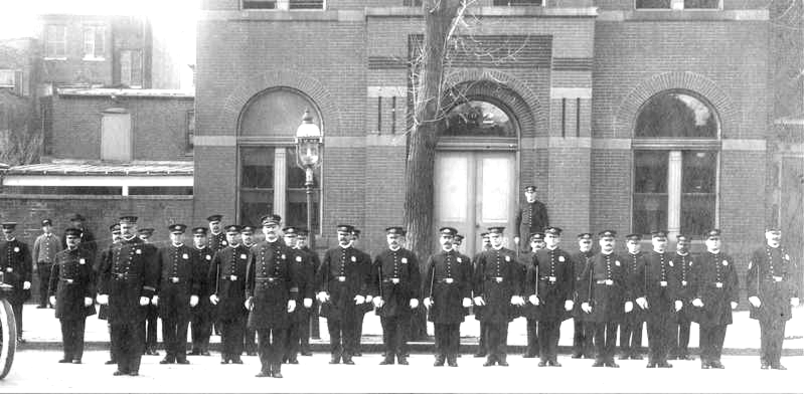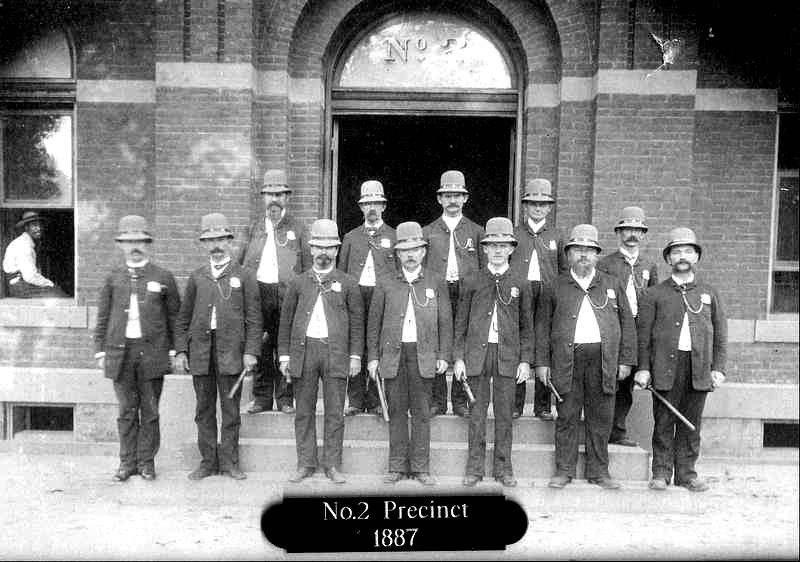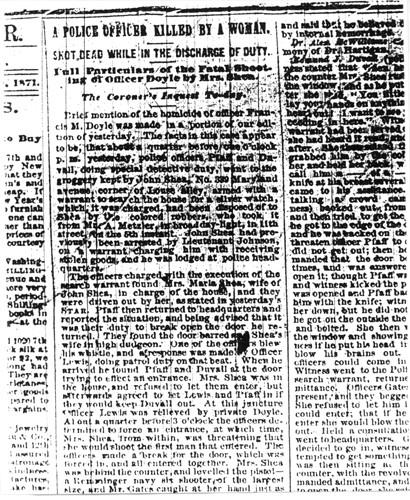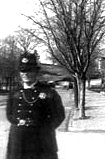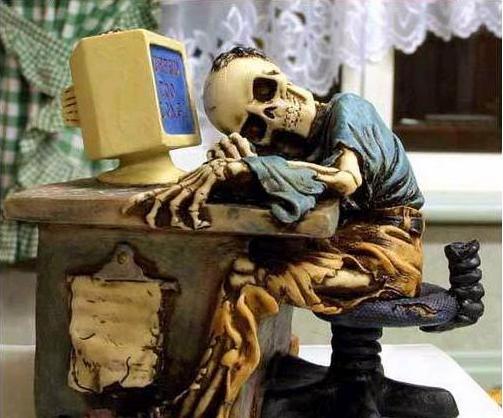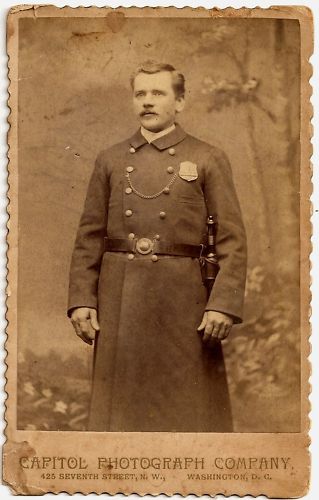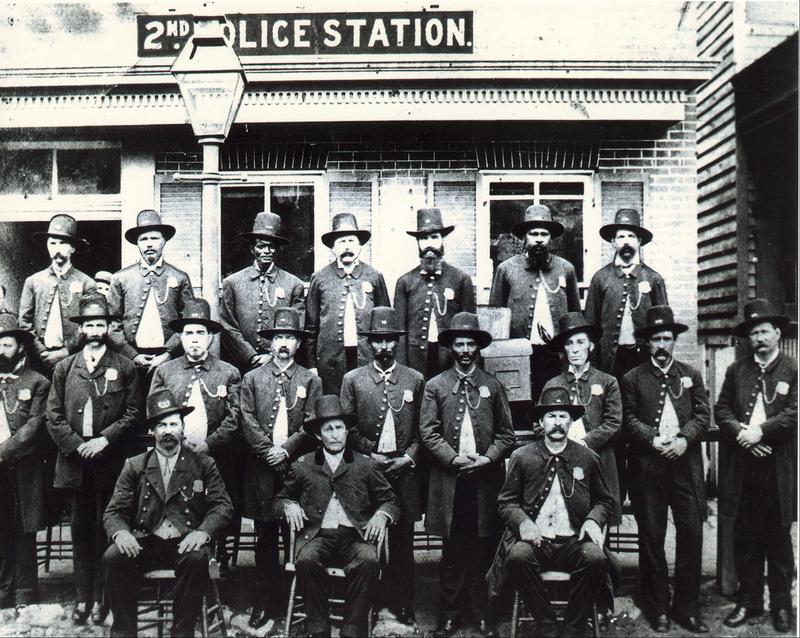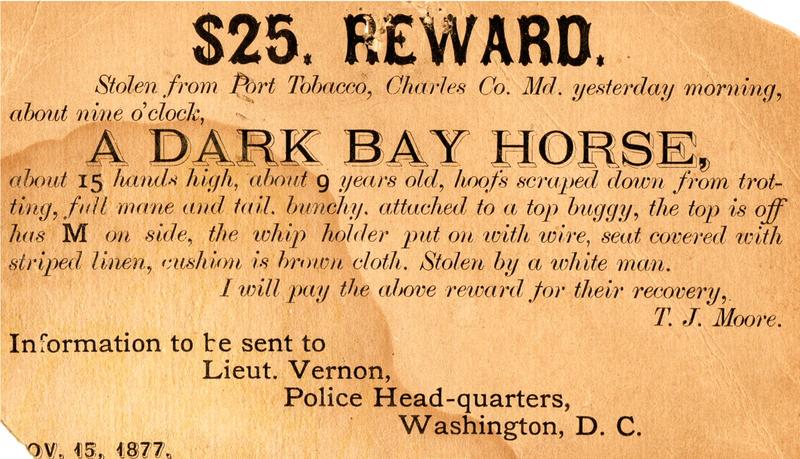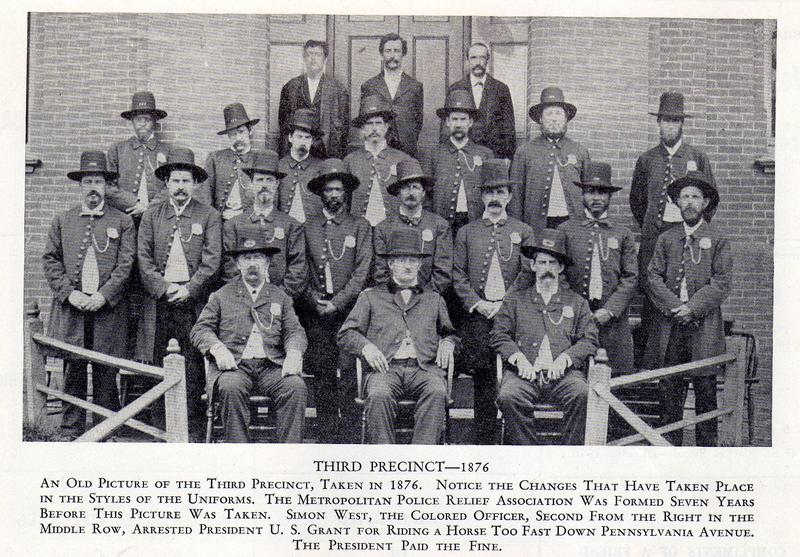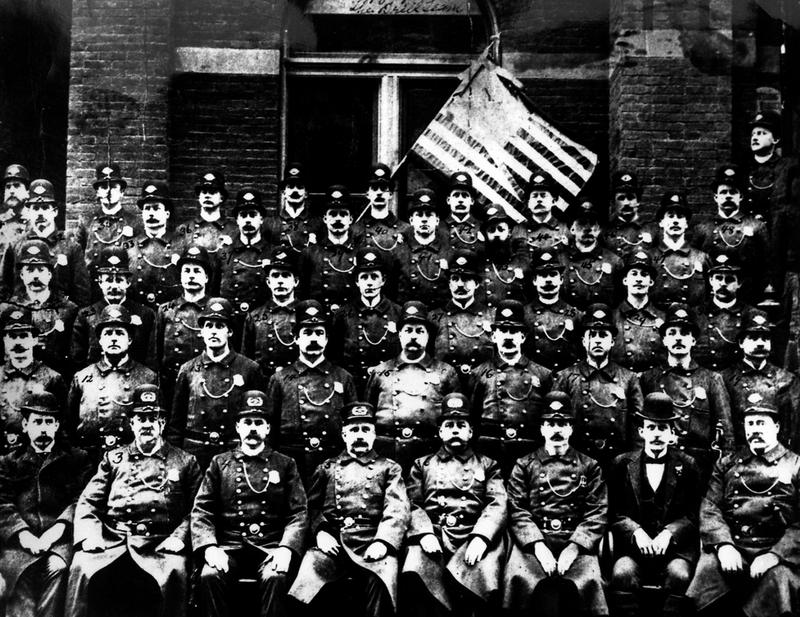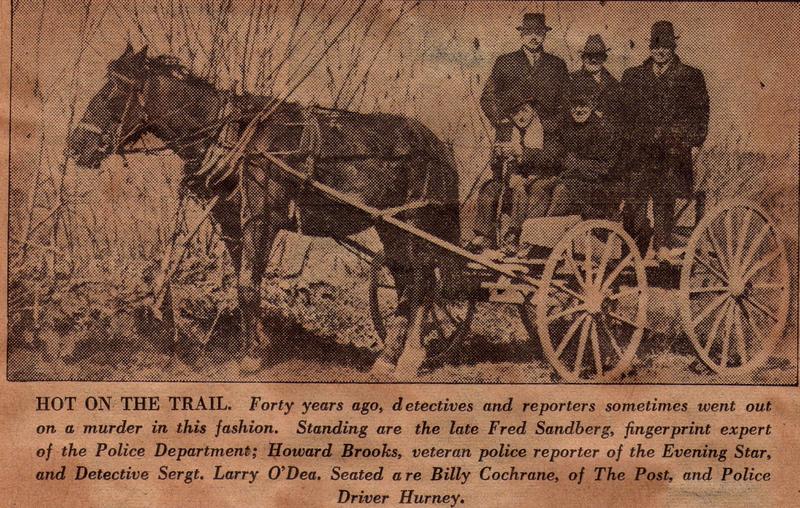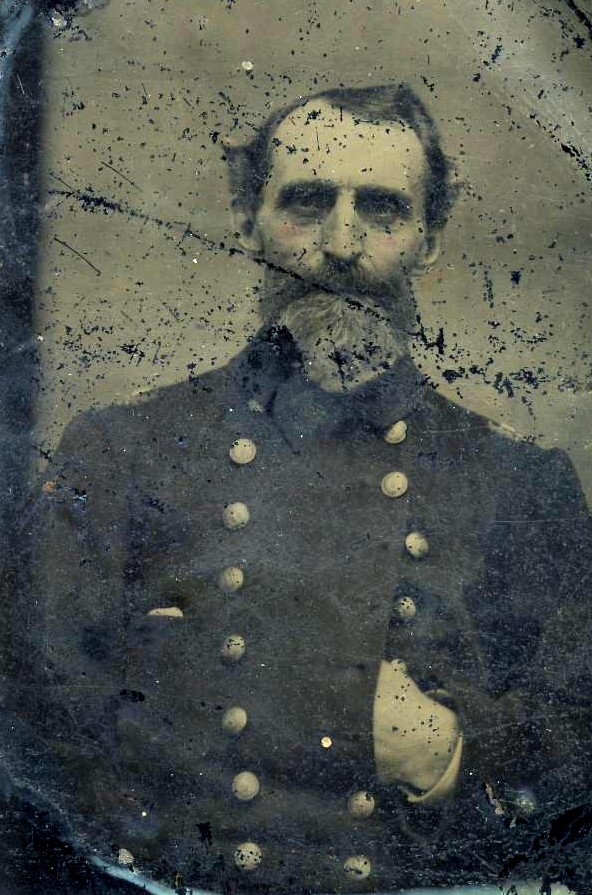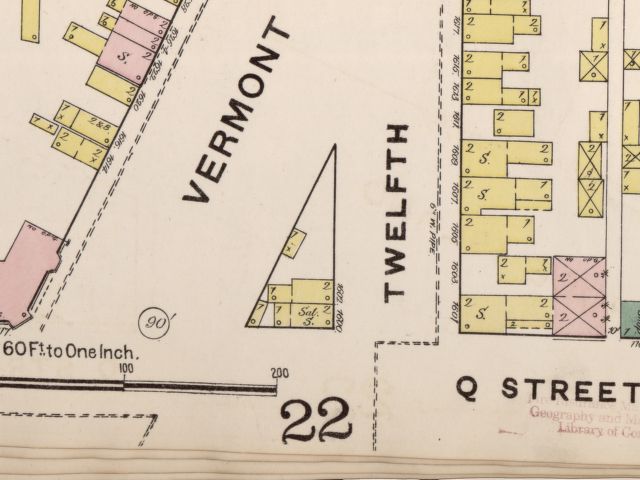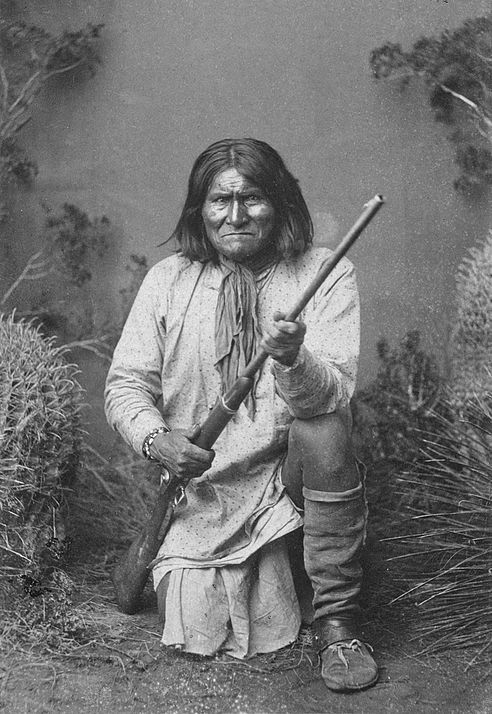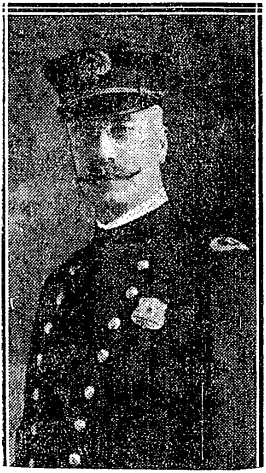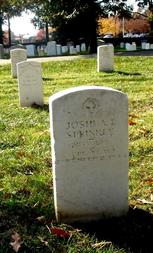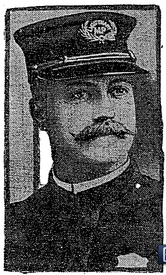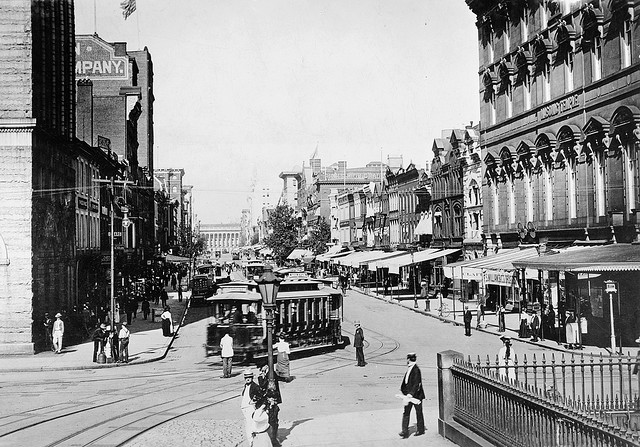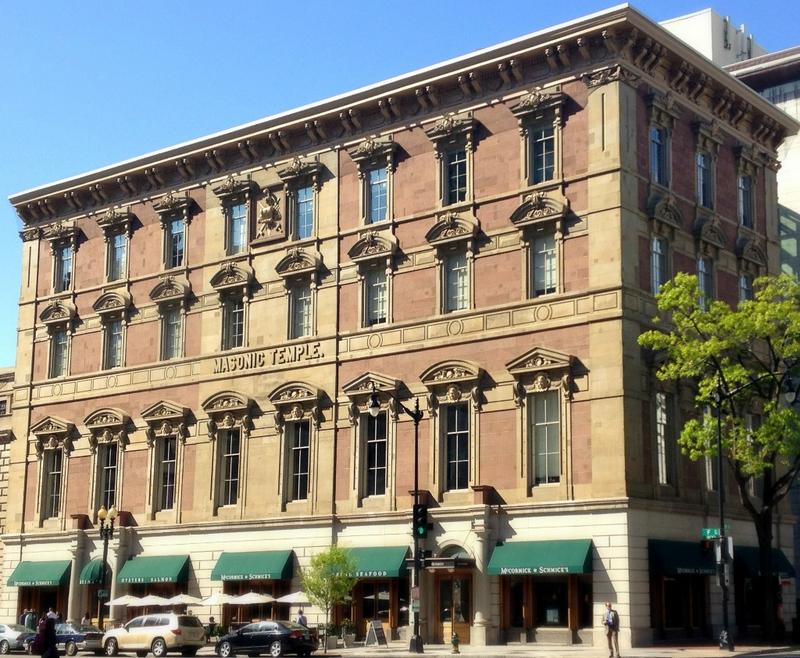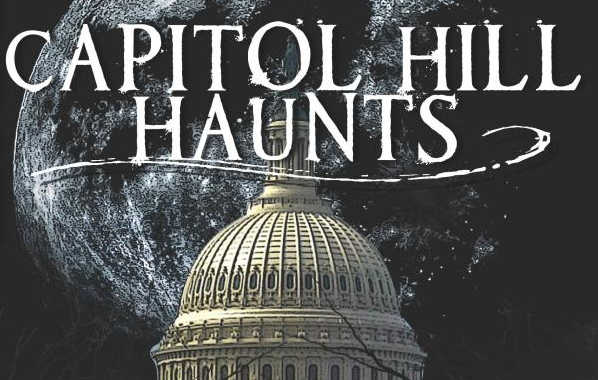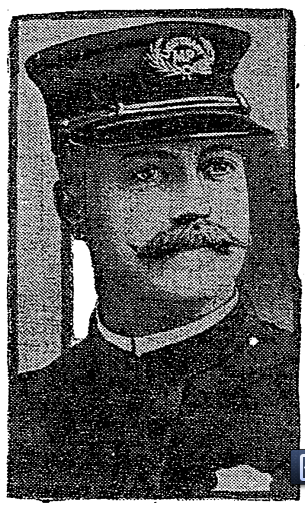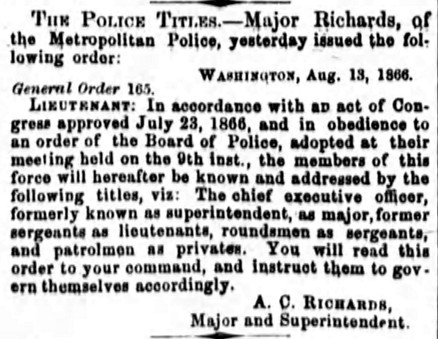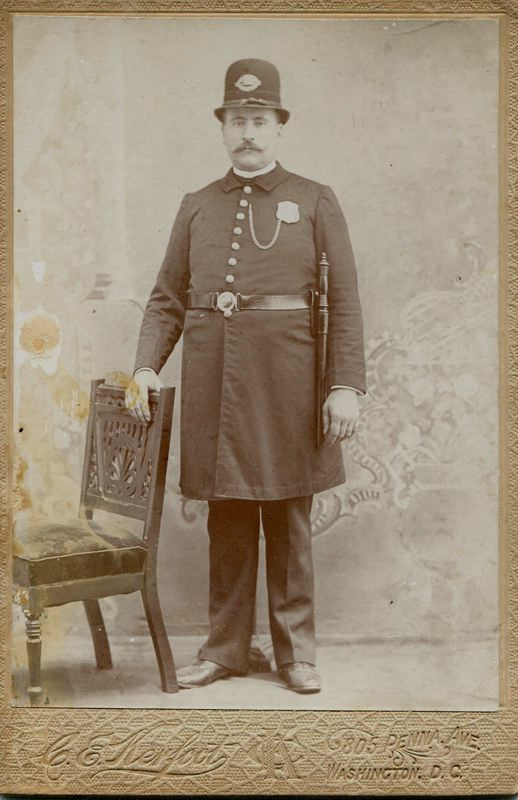Washington D.C. Metropolitan Police M.P.D.
1866 to 1899
Civil Right's Act of 1866 - Great Chicago Fire - Yellowstone National Park Created - National League of Baseball Founded - Battle of Little Bighorn - Billy The Kid Killed - Jesse James Killed - Washington Monument Completed - Boston Subway Completed - Yosemite National Park Created
M.P.D.'s first Officer Killed in the Line of Duty
1866 to 1899
BlackSheep Productions 2009
 | ||||||
1890 Washington D.C. Metropolitan Policeman
1887 - The first in-custody death occurred when a women set fire to her clothes while in a cell at the 7th precinct and died of her injuries.
A man by the name of Charles Copeland went to Baltimore and, while intoxicated, claimed to be a D.C. Policeman and began making arrests before being arrested by Baltimore Police, (MPD)
1873 - Vice president Schuyler Colfax, was robbed while on the street, (MPD).
1877 - Private Philip Thompson, one of the first African Americans appointed to the force, attempted to arrest a sailor and was savagely kicked in the head. As a result he lost his sight and was dismissed from the force, but was provided for by the Policeman's fund, (MPD).
1881 - An eleven year old boy, Charles Taylor, was put on trial for the murder of Eddie Ford, (MPD).
1893 - The Metropolitan Police Department recorded 27,245 arrests, with a force of only about 400 officers, an average of 68 arrests per man, (MPD).
1889 - Major and Superintendent Moore re-issued an order prohibiting reckless and indiscriminate use of the police service revolver in the course of duty, (MPD).
This is cool. It’s the Sanborn Fire Insurance Map of the area around Thomas Circle in 1888. The yellow buildings are wooden frame structures and the pink are brick buildings.
Map of Thomas Circle in 1888
Ghosts of DC
The lost and untold history of Washington
1878's Washington D.C. Metropolitan Police
Photo provided by the M.P.D.
Photo provided by the M.P.D.
Photo provided by the M.P.D.
1897 M.P.D. Drill Team
Photo provided by the M.P.D.
Photo provided by the M.P.D.
1890
Lt. Hamilton K. Redway served with the M.P.D. in the area of 1865 to 1890. Lt Hamilton passed at the young age of 53.
I was contacted by the great-great grandson of Lt. Redway who was looking for information on the M.P.D. Aside from this picture Kevin informed me of the following:
Hamilton K. Redway (1835-1888) served as a corporal in Company K, 24th Regiment of the New York Volunteers (1862-1863) and as lieutenant and later captain of Company F, 1st New York Volunteer Veterans Cavalry (1863-1865) during the Civil War. After the war, Redway, who was a white man, was second lieutenant in Company D, U.S. Colored Cavalry (1866). By 1869 he was appointed to the Metropolitan Police Force of Washington, D.C and served in at least the 2nd and 4th Precincts, 1st Ward (possibly others). He died of some sort of illness while still on the force on December 27th, 1888 - age 53.
The killing of Officer Crippen
The Washington correspondent for the Baltimore Sun wrote the following story, published on November 7th, 1889 about a chase and fatal shooting in the notorious Hell’s Bottom neighborhood.
See this and other stories if you click on the above link to "D.C. Ghost Stories"
WASHINGTON, Nov. 6.–Three men are dead today in consequence of the affray in a part of the city called Hell’s Bottom, in the northern section of the city, referred to in The Sun this morning. Osborne Busey, a negro, was wounded by another negro, George Bush, who ran, but was pursued by Officer A. N. Crippen, who shot at him. The negro Bush took refuge in Bob Brown’s saloon, on Twelfth and Q streets northwest, and ran upstairs, saying he would kill any policeman who followed him. Officer Crippen was not daunted, but followed Bush upstairs where Bush fired at him, and Officer Crippen returned the fire until he fell dead, leaving Bush mortally wounded and speechless. The officer’s body was taken off in a patrol wagon and the wounded negroes carried to the hospital, where Busey died at 8 o’clock this morning and Bush was a corpse at 8 o’clock. Both had bad reputations. As all the parties to the tragedy are dead the coroner gave burial certificates without an inquest. No braver officer ever lived than officer Crippen. He came here from Dranesville, Va., in 1877. He had a wife, but no children.
Bob Brown’s saloon was an the northwest corner of 12th and Q St. NW, in the little triangle formed by Vermont Ave. You can see it above in the 1888 map of the intersection. It’s the yellow structure labeled “Sal. S.”
Officer Joshua L. Sprinkle of the M.P.D.C.
Since starting this web site I have come across hundreds of M.P.D.C. Officers stories and historical facts. i have also come across additional folks interested in their history. The blog, " Ghosts of D.C." is a wonderful piece of historical education that I enjoy reading . The officer they have focused on most is Officer Sprinkle. I will be placing all of their stories on him below, enjoy !
_________________________________________________________________________________________________
Meet Officer Sprinkle – Captured Geronimo, Bodyguard for Wilson and Prohibition Violator
A couple of reader comments about an Officer Sprinkle in this earlier post piqued my interest in finding out a little more about the guy who has the kind of name you’d give to a cat. An unforgettable name, so hopefully I’ll be able to dig up enough information on this guy to write a post worthy of being “A Personal Story.”
Joshua Sprinkle - Boyd's Directory 189
Joshua L. Sprinkle was born July 7th, 1864 in Ohio, just south of Columbus (the 1900 Census incorrectly listed his place of birth as Iowa). In 1877, he moved to Des Moines, Iowa with his family.
When he was 12 years old, he became an apprentice in a harness and carriage trimming shop while also attending a local school. He pursued further studies in civil engineering and found himself in a surveying position on what became the Great Western Railroad, running from Chicago to Kansas City. While his surveying position landed him in Kansas City, he decided to enlist as a member of the city fire department.hen he was 12 years old, he became an apprentice in a harness and carriage trimming shop while also attending a local school. He pursued further studies in civil engineering and found himself in a surveying position on what became the Great Western Railroad, running from Chicago to Kansas City. While his surveying position landed him in Kansas City, he decided to enlist as a member of the city fire department.
In the 1880s, at the age of 21, he chose to enlist in the U.S. Army and served for a several years with Troop B of the Fourth United States cavalry, then stationed in Arizona. His time with the military included participating in the campaign against the Geronimo’s Apache nation and was present at the iconic Indian leader’s surrender in 1886 at Skeleton Canyon, Arizona. Not only was he present, but he was officially commended for his service. His troop escorted Geronimo and the remnant of his band to St. Augustine, Florida where he was made a prisoner.
After looking into this man’s past, I have come to one conclusion: Officer Sprinkle was a badass.
In 1890, at the age of 24, he was in Washington and had been accepted as an officer with the city police force. Throughout the 1890s he lived at 619 M St. NW with his wife Teresa, whom he married the year he started the force.
Run Sprinkle, Run
An amusing story about another hot pursuit by Officer Sprinkle was in the November 19th, 1894 Washington Post:
Daniel Reidy, an ex-policeman of the Ninth precinct, was arrested about 1 o’clock yesterday morning, by Officers Kilmartin and Flathers, for Detective Weedon, who wants him for the alleged fraudulent disposal of a horse and buggy. After Reid had been taken into the First precinct station and while he was being searched, he made a dash for liberty. He darted out of the station and up Twelfth street, with Officer Sprinkle, who has charge of the desk at the station, hot after him. Reidy ran to G street, then fell exhausted. Sprinkle was running so fast that he could not stop and fell over Reidy. The officer’s watch was broken by the fall and his clothing rent in several places by the force of the fall. Reidy was taken back and locked up.
Joshua and Teresa would go on to have two children, a daughter Alena and a son Clarence while living on M St. The incident I wrote about in the prior post happened in 1895, their last full year there. The following year, they moved to a new home at 1320 Florida Ave. NE and, around Thanksgiving of that year, had their third child, a son, Raymond. A fourth child, and the third son Joseph arrived in May of 1899.Another daughter, Helen, was born to the couple in 1904. And by the 1910s, they had moved their large family from their Florida Ave. residence to 924 Madison St. NW in Brightwood.
Two from the crazy vault
Here’s a story fit for its own “From the Crazy Vault” post. This is from an article in the June 19th, 1901 Washington Post, entitled “Chamber of Horror.”
A demented woman, forty-three years of age, absolutely nude and squatting on the filthy floor of a third-story room in a house where she has been shut up by her relatives for the past ten years, was the revolting discovery made at 1127 Fourth street northwest by health department and police authorities of the Capital yesterday afternoon.
…
Sergt. Sprinkle and a squad of men from the Second precinct accompanied Police Surgeon vail to the house, and soon after removed the insane woman from the scene of squalor and sent her to St. Elizabeth’s Asylum. The removal was witnessed by a horrified throng of persons, who were attracted by the investigations of the police.
I’m sure this is only one of many crazy scenarios into which Sprinkle was thrust. And here is yet another crazy incident he was a part of. This happened on March 6th, 1909.
Capt. William H. Matthews was shot and almost instantly killed in his private office in the Fifth precinct station house about 7:45 o’clock last night by Policeman J. W. Collier, of the same precinct. Collier is locked up charged with murder and refuses to tell why he fired the fatal shots.
Capt. Matthews was alone in his office when Collier entered. Attracted by five successive shots, Lieut. J. L. Sprinkle, who had just reached the building, rushed into the office and knocked a revolver from Collier’s hand as he was about to send another bullet into his victim’s head.
Two bullets had entered Matthews forehead between the eyes, and three had plowed their way through the temple bones and lodge in the brain. He lived about a minute.
This act is shocking, but what might be even more disturbing is how graphic this article is. Far more graphic than what we’re likely to see in paper’s today. It goes on to say:
Collier admitted shooting his superior officer, and explained that he had ample cause. To Lieut. Sprinkle he said:
“I shot him, and I don’t hesitate saying so. Too many people saw me with the revolver to deny anything. I don’t intend to make a statement until the proper time, and then I will tell everything.”
…
When Collier was hurried from the room the captain fell over on his back, and expired in Lieut. Sprinkle’s arms.
Bodyguard for the President
The March 1st, 1914 Washington Post has a full column praising Lieutenant J. L. Sprinkle’s service to the city as a popular and efficient officer. He was honored with the privilege of being a personal bodyguard to President Woodrow Wilson when he visited his home town of Staunton, Virginia. Below is an excerpt from the piece.he March 1st, 1914 Washington Post has a full column praising Lieutenant J. L. Sprinkle’s service to the city as a popular and efficient officer. He was honored with the privilege of being a personal bodyguard to President Woodrow Wilson when he visited his home town of Staunton, Virginia. Below is an excerpt from the piece.
Lieut. J. L. Sprinkle, of the Fifth precinct, enjoys the double distinction of being one of the best officers on the force as well as one of its most popular members. He has had a long military training and one of his most cherished possessions is an honorable discharge from the service of the United States army. His military training has had much to do with his steady promotion in police work. He was selected as one of the personal bodyguard of President Wilson when the chief executive visited his home town of Staunton, Va.Lieut. J. L. Sprinkle, of the Fifth precinct, enjoys the double distinction of being one of the best officers on the force as well as one of its most popular members. He has had a long military training and one of his most cherished possessions is an honorable discharge from the service of the United States army. His military training has had much to do with his steady promotion in police work. He was selected as one of the personal bodyguard [sic] of President Wilson when the chief executive visited his home town of Staunton, Va.
Don’t disobey The Eighteenth Amendment
Lieutenant Sprinkle in 1923
Lieutenant Sprinkle, charged with rum running in 1923
I came across an interesting piece in the December 1st, 1923 Washington Post, which implicated Sprinkle in a local Prohibition-related scandal.
Lieut. Joshua L. Sprinkle of the Eleventh police precinct, was arrested yesterday on charges of conspiring to defeat the purposes of the eighteenth amendment.
Lieut. Sprinkle is the tenth person to be rounded up by intelligence officers of the prohibition enforcement unit within 72 hours on charges of conspiracy.
Lt. Sprinkle who was charged with Rum Running in 1923. He must have upset someone to have been charged back then...
Well that’s not a good thing to have on your record. He was being charged with participating in a rum running circuit, facilitating the flow of illicit alcohol into the city from the southern states. He was suspended from the service, pending the investigation.
On September 24th of the following year, the case was still pending (by then dubbed the Tampa liquor conspiracy) and Sprinkle was still suspended from the force. And from the sounds of this article, it seems like he might have been innocent, just in the wrong place at the wrong time (or I am gullible).
Three of the 15 local defendants in the so-called Tampa liquor conspiracy testified before United States Commissioner Needham C. Turnage yesterday in an effort to prevent their removal to Florida.
Lieut. Joshua L. Sprinkle, and William Haller, suspended member of the police department, and O.C. Fredericks, Pullman conductor, denied knowledge of the alleged conspiracy. Lieut. Sprinkle suggested the accusation against him was predicated upon his buying some corks for his wife at the store of James Hunter, one of the defendants, in D street northwest between Ninth and Tenth streets. He was in the store when a prohibition raiding party entered, he testified. Sprinkle said that he had not previously been in the store for six months.
Given his military track record and his exemplary service in the force, I have a hard time believing he would actually affiliate himself with a rum-running wracket, but I could be mistaken … though, innocent until proven guilty right?
Well, the case went all the was into March of 1925. It was dismissed, even though they were also indicted in Florida, the District Supreme court refused to permit extradition to Florida to stand trial. He was reinstated by Major Daniel Sullivan, with all back pay due to him.
Poor Joshua Sprinkle turned out to be caught up in the wrong place at the wrong time, dragging his pristine reputation through the mud in the waning years of this career. He ended up retiring from the police force that same year.
The Old Soldier
An article in the Post on September 8th, 1940 stated that Joshua Sprinkle was to receive a Masonic Token. At the time, he was residing at 924 Madison St. NW; he was also apparently the last known living soldier to have participated in the capture of Geronimo.
Final resting place
Joshua L. Sprinkle passed away on November 11th, 1944 (his wife Teresa died the previous year). He is buried in Arlington National Cemetery (Section 13 Site 375-A)
However, this is not the end of Lt. Sprinkle...
Lieutenant Sprinkle has an interesting life, because of that I have decided to add more stories about Joshua Sprinkle.
A “Bomb” is Found and Officer Sprinkle Saves the Day “Bomb” is Found and Officer Sprinkle Saves the Day...
Once again, our favorite hero has come to the rescue.
This tale from the annals of Officer Sprinkle dates back to July 1st, 1914. The Washington Post reported a story about an explosive device found in a telephone box near the Old Masonic Temple.
“It’s a dynamite bomb all right,” one man emphatically announced.
“Does look like an infernal machine,” declared another.
Then the police were notified that an attempt to blow up the Old Masonic Temple, at Ninth and F streets northwest, last night, had been frustrated by the timely discovery of an explosive device hidden in a telephone booth adjoining the large auditorium on the second floor.
There was to be a mass meeting of citizens held in the hall, the purpose of which was to protest against the colored man enjoying franchise.
When the police arrived they found an excited group near the telephone booth, wherein reposed to the deadly machine. A detective approachel [sic] the booth stealthily, and gingerly lifted the suspected object out. The crowd backed away.
There were many conjectures as to the object of the person who planted the bomb. There appeared to be several fuses issuing from it. The thing was about the size of a shoe box, made of wood, painted black, and embellished with strange copper appliances.
The police exercised the greatest of care in handling it at the First precinct station, where “it” was taken. Lieut. J. L. Sprinkle examined the thing, but did not accept a challenge to take a kick at it. During the deliberations Frank S. Hammersley, 940 Thirteenth street southeast, an electrician, came rushing into the station, and said he had been robbed.
“Yes, robbed,” he continued. “I’ve been working on a new model for an electric battery. This afternoon I left my battery in a telephone booth up at the Old Masonic Temple, and now it’s gone.”
Lieut. Sprinkle pointed to the “infernal machine.” “Is that it?” he asked.
Hammersley’s face beamed with joy. He pounced upon his invention and hugged it in his arms.
“That’s it,” he said. “Some durn fool stole it, but I knew the police would find it for me all right.”
This is a 1909 photo of the Masonic Bld,(on the right). Notice the Police Officer in the road directing traffic...
Here is a photo of the Masonic building today
Officer Sprinkle and the Haunted Police Station
___________________________________________________________________________
This is the first guest post by GoDCer Tim. Given that we have “ghosts” in our name and with today being Halloween, it’s appropriate to have a post about the paranormal. Also, don’t forget to check out Tim’s recently released book on Amazon about haunted Capitol Hill.his is the first guest post by GoDCer Tim. Given that we have “ghosts” in our name and with today being Halloween, it’s appropriate to have a post about the paranormal. Also, don’t forget to check out Tim’s recently released book on Amazon about haunted Capitol Hill.
On Capitol Hill a few blocks from the Eastern Market Metro Station is a fully functioning relic of a time gone by, the Metropolitan Police Department’s First District Substation. MPD traces its origins back to the Civil War, when rapid government expansion, an incoming horde of unscrupulous opportunists and not a few drunken soldiers made the existing system of a fifteen-man auxiliary watch untenable.
Today, MPD is a thoroughly modern crime-fighting organization, but the 1D-1 Substation hearkens back to a different time—when patrolmen walked their beat, checking in via call boxes still visible on many city streets, and used whistles to call for backup. Local residents are largely familiar with it as the place to go to get parking permits for out-of-town residents, and a step inside gives a whiff of Joe Friday. It’s a throwback, a historic building still in active use, not gussied up with new wood paneling, with an actual desk officer, slightly bored and almost always helpful, there to answer questions.
Ghosts and cops have a long, symbiotic history together. In days past, and today to an extent, they would often be the only two classes of beings walking around deserted city streets at two o’clock in the morning. Many a ghost has been sighted by a police officer, and even when the ghost appears to someone else, reporters instantly turn to the officer on the local beat for confirmation. More often than not, the cop is a believer and can regale even cynical reporters with prior instances of apparitions, streets he won’t walk down and other dark doings of the night.
So it was no surprise a few years ago when a local MPD officer (who has asked to remain nameless) told a tale of a mysterious occurrence at the substation. It happened, as these tales so often do, on a dark and stormy night, when the officer was on desk duty at the front door. The station was equipped with a closed-circuit TV camera, naturally, and just when the officer felt that he was losing the long war against drowsiness, he noticed another officer on the TV, which was odd, as he was mortally certain that he was alone in the building.
It was hard to see, but the phantom officer didn’t look like any of the police officers then assigned at the station. What’s more, he was wearing an anachronistic jacket and a long coat, seemingly dripping with rain. Via camera, our confused and slightly apprehensive officer tracked the mysterious being as he headed out a side entrance and disappeared into the gloom. A search was made: the side door was still locked and showed no sign of being opened recently, and there were no wet floors that you might expect from a dripping coat. Playing back the tape revealed only the ordinary quiet of a virtually empty police station in the wee hours of the morning.
The officer had no explanation of the tale and has often managed to convince himself that it was all in his head. But the question lingers: who was the phantom officer?
Well, there’s certainly a candidate that fits the bill. On the evening of March 5, 1909, at 7:45 p.m., policeman John W. Collier boldly walked into what was then the Fifth Precinct station house and shot the precinct commander, Captain William H. Mathews, five times, emptying the last three rounds directly into his head. Captain Mathews’s deputy, Lieutenant J.L. Sprinkle (longtime favorite of Ghosts of DC readers!), and two other officers instantly wrestled Collier to the ground, but the damage was done. A doctor was summoned, but he could only confirm what the officers already knew: Captain Mathews had been ruthlessly killed without warning by one of his own officers.
Collier offered no resistance nor defense. “I shot him, all right, and I’ll give my reasons later. I was rational and sober, and there was nothing wrong with me,” he calmly told Lieutenant Sprinkle as he was taken to the District Jail.
In the coming days, some semblance of a picture gradually emerged of the events of the fifth and before. Captain Mathews was known as a by-the-book cop, a “strict disciplinarian,” as the Washington Times put it, but he was later accused by defense attorneys of being “quarrelsome, vindictive, and violent.” Collier was a slacker who had been before the trial board (a disciplinary board for police officers) nine or ten times. His mother defended her son but offered what was perhaps not the best defense: he felt he was being persecuted for being late.
On the day of the murder, Collier was supposed to go on duty at midnight. A 4:00 p.m., he called in sick. The captain had had enough and told him to come in to the station so that he could see if Collier was sick or not. Just past 7:00 p.m., Mathews received another phone call from Collier that made him turn red and slam “the receiver on the hook with such vigor that the telephone nearly overturned.” Collier showed up about half an hour later, talked to no one and walked by the other officers, who nudged one another and whispered, “He’ll get his when the captain sees him.” Seconds later, the shots rang out.
Collier testified several months later that this was a case of self-defense. He said that the captain had told him in the telephone exchange, “I wouldn’t give 15 cents for your chances when you come into the office.” Upon his arrival, the captain told him that his goose was cooked, to which Collier replied, “I think you have another thing coming, Captain.” Then, according to Collier, Captain Mathews muttered, “Damn you, I’ll get you for that,” and reached toward his hip pocket. Thinking that Mathews was going to shoot first, Collier fired and killed him.
The trial was a particularly tense affair, as at one point the defense attorney took a swing at the district attorney. The assistant district attorney jumped between them and got a punch in the face for his efforts. The fight was then broken up by a police officer and, believe or not, the defendant. Perhaps that swung the jury a bit, or perhaps they found his story plausible, as Collier was found guilty of only manslaughter and was sentenced to fifteen years in prison.
Is Captain Mathews the mysterious ghost seen on the video cameras? Who knows, but to answer the inevitable question, it was cold and clear out on the night he was murdered, although Washington was recovering from a snowstorm so intense the night before that it drove President Taft’s inauguration indoors. So perhaps it was melting snow on the overcoat?
Cabinet photo of an 1880's
Notice the head piece and belt buckle unique to today's officers...Washington D.C. Metropolitan Police Officer.
Cabinet photo of a 1880's Sgt. with the Washington D.C Metropolitan Police Department
This story was printed in the Baltimore Sun on October 11th, 1890.
Washington, Oct. 10.–One of the most remarkable suicide ever known in this city occurred tonight. A young man whose name is thought to be Edward Caton, killed himself by forcing his neck between the iron palings of the fence that surrounds the grounds at the back of the White House. Exactly what time the suicide occurred is not known, for after the gates of the White House grounds are closed, but few people pass around the circular walk that skirts them, just outside the iron fence. The fence itself is about five feet high, with the iron palings, about two and a half inches apart, projected six inches above the iron rail that holds them in place. There are both gas and electric lights about the place, but owing to the branches of the heavy trees which overhang the walk from the grounds of the Executive Mansion it is dimly lighted, and from any distance objects can scarcely be distinguished. Directly south of the White house and at one of the darkest points on the walk the suicide occurred.
A young mulatto woman, who was hastening through the grounds on her way homeward from some place of employment down town, discovered the body about 7.30 o’clock. The darkness prevented her from seeing that the man was dead, but the attitude and, as she supposed, the intent with which he was peering through the fence at the Executive Mansion caused her to think that some thing was wrong, and she retraced her stp and informed a park watchman of what she had seen. The watchman hastened to where he stood and was about to accost him, when he discovered that the man’s neck was jammed between the iron palings of the fence until the front portion rested upon the iron rail.
The watchman at once summoned police man Heller to his assistance, and together they extricated the man from his position. This was not done, however, without considerable difficulty, for so closely did the palings grip the neck of the suicide that it required a strong effort on the part of both the officers to release him.
The body was still warm, and as soon as a patrol wagon was summoned it was placed in it and the horse driven at a furious gallop to the Emergency Hospital, where it was hoped that consciousness might be restored, but medical assistance came too late, and all the physicians could do was to determine that life was extinct.
In the pockets of the deceased were found cards bearing the name of Edw. Caton, and showing that Caton had been a member of the Knights of Labor and also of the Printers’ Union, but whether or not Caton and the dead man were identical the police were unable to determine. In consequence nothing is known either of the man’s circumstances or the causes that led him to take his own life except the cards referred to. Neither documents nor money were found in the dead man’s pockets.
It was thought for a time by police that possibly the man had been foully dealt with and his neck jammed between the palings in order to give his death the appearance of suicide. A careful examination of the place where the body was found was therefore made, but no signs of a scuffle having taken place or of blood spilled could be discovered, nor did the body show marks of violence except at the neck where the iron fence had gripped it, while the neat suit of black clothes in which it was dressed were not in any way disarranged.
Late tonight it was ascertained that Caton was a cigarmaker, employed in West Washington.
Story provided by " Ghosts of D.C. "
We were able to dig up Edward Caton in the 1880 U.S. Census, which listed him as a 20-year-old cigar maker, living as a boarder on Bridge St. (current-day M St. in Georgetown).
CpG
P.O. Box 911
Foxborough, Ma.
02035
Police Rank changes in 1866
This is an 1890 D.C. Policeman. Notice the hat badge, belt buckle, Baton holder and chained badge - Classic...
Photo was on Ebay.
Here is a wonderful picture from 1890 of an MPD Officer. This picture was on ebay and sold for much more then I could afford. It is a great display of police in the 1800's.. This is the stuff I love, police over 100 years ago who were doing the same thing we do toady..
Three Women Take Revenge Against Special Policeman
This likely was a scene of great amusement for any who were able to witness it. This is an article from August 9th, 1894 in the Washington Post.
Three irate women with horse whips and a yelling special policeman gave plenty of amusement last Friday to a number of people who stood outside of a grocery store on Twenty-sixth, between F and G streets northtwest [sic], George Cunningham is the name of the special officer, and he is employed by the storekeepers around “Foggy Bottom” to watch their places of business.
He was supposed to have been the author of some derogatory reports against the character of Harriet Payne, a white woman who lives on Water street, in Georgetown. The report reached the ears of the woman, and she traced it to the special officer. The woman took into her confidence her two sisters and started out for revenge. They secured three heavy horsewhips, and on Friday night by strategy got the watchman to enter the grocery store. Once inside the front door was locked and the key taken away. Seeing the determined look on the faces of the females the special suspicioned that something was wrong and attempted to escape. This was the signal for the women, and all three started in to lash the man. Over his head and across his back the blows rained down on the unfortunate watchman. There was no escape from the blows, and not until the women were exhausted did they cease from their labors. The door was then opened and the watchman allowed to go, and he immediately vanished, leaving behind his hat.
The affair has been kept very quiet, the police not knowing anything of it. Further results are expected in the matter, and an assault case is likely to grow out of it.
That 1890s rent-a-cop will surely mind his mouth the next time. A couple of days later, this article was published in the Post.
Mrs. Harriet Payne, who keeps a store on Water street, Georgetown, denies most emphatically that she has had any trouble with Special Officer George Cunningham, as reported on Thursday. She says if there was a cow-hiding affair, as rumor has it, she was in no manner connected with it; in fact, she has no acquaintance with Cunningham. Mrs. Payne requests this statement to set herself right.
Seems fishy. Either Harriet is covering up, or some Washington Post fact checker didn’t do their job. Either way, this is an amusing story to share with the GoDC community.
Borrowed from THE GHOSTS OF D.C.
